How to Paint Seashells – A Step-by-Step Guide
This post may contain affiliate links. We may earn a small commission from purchases made through them, at no additional cost to you.
Painting seashells is a delightful and creative way to bring a piece of the beach into your home! Whether you’re a seasoned artist or a crafting newbie, transforming these natural treasures into colorful works of art is both fun and relaxing. In this article, we’ll dive into the whimsical world of seashell painting, exploring easy techniques, vibrant designs, and tips to make your seashells pop with personality. So, grab your paintbrushes, gather your seashells, and let’s embark on a seaside adventure from the comfort of your crafting space!
Table of Contents
Key Takeaways
- Clean and prepare seashells before painting.
- Use acrylic paints and fine-pointed brushes for detailed designs.
- Seal painted seashells for preservation and display.
Preparing Your Seashells for Painting
Transforming seashells into vibrant pieces of art is a delightful way to bring a touch of the beach into your home. Start by preparing your seashells with a clean surface and a white base coat if necessary, ensuring that your paints adhere well. This foundational step is crucial for achieving brilliant, lasting colors in your designs. Painting seashells is an approachable craft that allows for endless creativity.
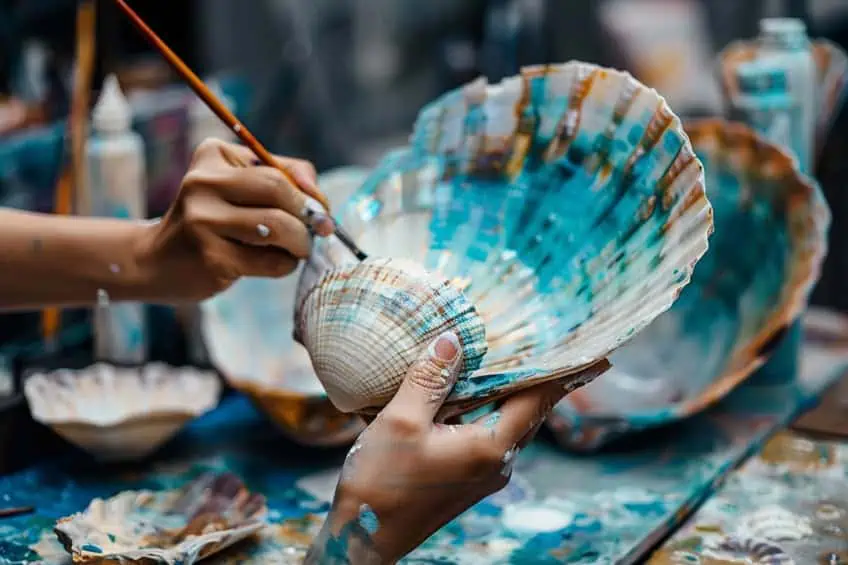
Using acrylic paints and fine-pointed brushes, you can experiment with patterns, colors, and techniques to create unique decorative pieces. Consider trying various methods such as dot painting, stripes, or even intricate scenes that reflect the ocean’s beauty. Once your masterpiece is complete, a protective sealant will preserve your work and give it a polished finish. Display your painted seashells as standalone art pieces, incorporate them into larger projects, or even gift them as thoughtful mementos.
This simple yet satisfying art project can provide hours of enjoyment and result in beautiful keepsakes.
Where to Get Seashells
Seashells can be collected from the beach or purchased from craft stores. For the best results, look for shells that are intact and free of major cracks. Some stores offer cleaned and polished shells, saving you preparation time. Antique shops and online marketplaces are also good sources.
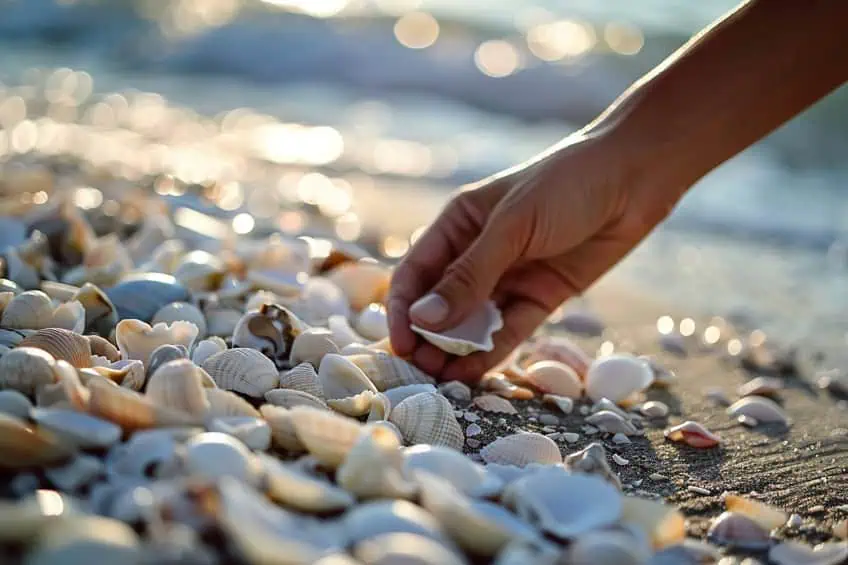
Cleaning and Selecting Shells
Before painting, rinse the shells thoroughly in warm, soapy water to remove sand, dirt, and organic material. Use a toothbrush for difficult-to-clean areas. Once clean, place the shells on a paper towel to dry. Select shells that have smooth, flat surfaces for easier painting.
Setting Up Your Workspace
Choose a well-ventilated area with good lighting. Cover your workspace with newspaper or a drop cloth to protect surfaces. Have a cup of water and paper towels handy to clean brushes and manage spills. Use watercolor paper to test colors and practice strokes before applying paint to the shells. Proper setup helps ensure an efficient and enjoyable painting experience.
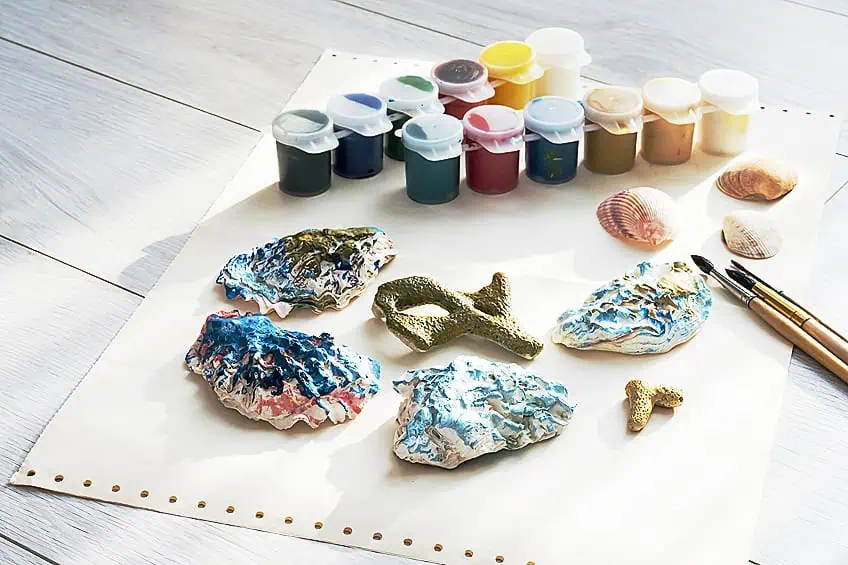
Materials and Techniques
When painting seashells, selecting the right materials and understanding specific techniques is crucial. Essential materials include various types of paints, appropriate brushes, and basic tools for mixing and applying colors.
Choosing the Right Paints
For painting seashells, acrylic paints are typically recommended due to their durability and quick drying time. They adhere well to the shell’s surface and offer a vibrant color range. Watercolors can be used but may not provide the same opacity or staying power as acrylics. Using a white paint base coat can enhance the vibrancy of the top colors, especially if the shell has a dark or patterned surface. Make sure to use a multi-surface acrylic paint that can withstand handling and exposure to moisture.

Brushes and Tools
The choice of brushes significantly affects the final result. Fine-pointed brushes are ideal for intricate details and dot patterns. Flat brushes work well for larger areas and base layers. For more creative designs, foam brushes can be useful for applying paint evenly. Basic tools include a palette for mixing colors and water containers for cleaning brushes.
Toothpicks or fine-tipped tools are excellent for adding tiny details or for scraping away small areas for a distressed look.
Mixing Colors and Applying Base Layers
Before painting, it is important to know how to mix colors effectively. A palette helps in mixing and creating custom shades. Start with primary colors and mix small amounts to achieve the desired hue. Applying a base layer is key to ensuring that subsequent layers adhere properly.

If the shell is not naturally white, begin with a white paint base coat. Allow it to dry completely before adding additional layers to prevent colors from blending unintentionally. For a smooth finish, layer the paint gradually. Start with light, even coats and build up color intensity slowly. This technique prevents drips and ensures a consistent color application.
Creative Designs and Details
Painting seashells opens up a wide array of creative possibilities, from drawing and sketching intricate designs to adding dimension and incorporating special elements like glitter and gems.
Drawing and Sketching Designs
Start by using a pencil to lightly sketch the initial design. Popular choices include geometric shapes, floral patterns, and ocean-themed motifs like waves and sea creatures. For precision, mark out key lines and curves before painting. This technique helps maintain the natural contours of the shell, ensuring a balanced composition. Simple words or phrases can also be added for personalization, using elegant or bold fonts that suit the design theme.
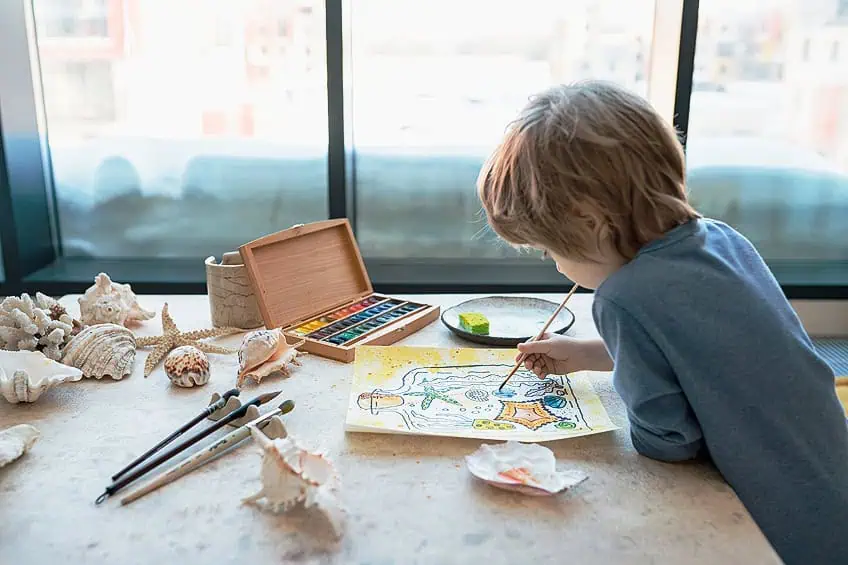
Adding Dimension and Interest
Creating depth in seashell art involves strategic use of shadows and highlights. The application of metallic paints, such as gold or silver, adds a three-dimensional feel to the artwork. Layering paint and adding textured details like tiny dots or brush strokes can also enhance the visual interest.
For instance, using lighter shades to highlight the ridges and darker tones to accentuate the curves creates a more dynamic piece.
Incorporating Special Elements
To elevate the design further, introduce elements like glitter, gems, and beads. These materials can provide a shimmering effect that catches light beautifully. Using materials like metallic paint and gold accents not only adds sophistication but also makes the artwork stand out.

For a more creative and playful touch, involve kids in decorating with bright colors and fun elements like stickers or miniature decals. Overall, paying attention to intricate details and imaginative components ensures each seashell becomes a unique piece of art.
Finishing and Displaying Your Painted Seashells
Applying those final touches will ensure your painted seashells stand out and last longer. Additionally, creative display ideas can turn them into unique pieces of decor or memorable gifts.
Applying Finishes for Durability
To protect the painted seashells, consider applying a protective finish. A glossy finish can enhance the colors, making them look vibrant and shiny. Alternatively, a matte finish provides a subtler, elegant appearance. Use acrylic spray paint for an even coat. Hold the spray can about 6-8 inches from the shell to avoid drips. Apply in light, even layers, allowing each layer to dry thoroughly.
Some may prefer a brush-on sealant for more control.
Apply thin, even layers and let each coat dry fully. Water-based polyurethane is a good choice as it minimizes yellowing over time. Make sure to seal the entire surface, including the underside, to protect against moisture and chipping. This finishing touch will help maintain the beauty of your painted shells.
Seashell Decor and Gift Ideas
Incorporate your painted shells into home decor for a touch of nature. Candle holders can be adorned with shells glued around the base. Painted seashells also make charming accents for a picture frame. Create a seashell jar by placing smaller painted shells inside a clear glass jar. This makes a lovely display piece for shelves or coffee tables.
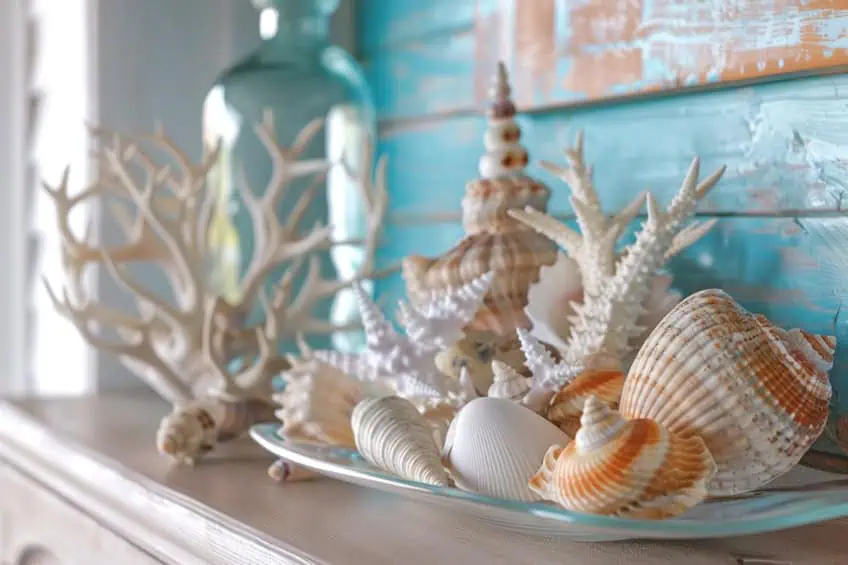
Affix shells to a canvas for a colorful, textured wall art piece. For gifts, arrange various sizes and colors of painted shells in a decorative box. These unique items can serve as beautiful reminders of coastal memories, ideal for gifting. Displaying your painted shells thoughtfully can transform simple projects into standout pieces of art.
And there you have it—your very own collection of beautifully painted seashells! With a splash of color and a touch of creativity, you’ve transformed simple shells into stunning pieces of art. Whether you use them to decorate your home, give as unique gifts, or simply enjoy the therapeutic process of painting, these seashells are a wonderful way to keep a bit of the beach with you all year round. So, keep experimenting with colors and designs, and most importantly, have fun letting your creativity shine! Happy crafting!
Frequently Asked Questions
What Steps Are Involved in Cleaning Seashells Before Painting?
First, rinse the shells under warm water to remove sand and debris. Next, soak them in a solution of one part bleach to three parts water for about an hour. Rinse thoroughly and let them dry completely before painting.
Which Types of Paint Are Best Suited for Use on Seashells?
Acrylic paint works well for seashells due to its strong adhesion and vibrant colors. Watercolors can be used for a more delicate effect. For extra durability, consider sealing the painted shells with a clear varnish or sealant.
How Can I Use Watercolors to Create Designs on Seashells?
Start by diluting liquid food coloring with water to create a watercolor effect. Apply a light wash to the entire shell and let it dry. Layer on darker shades to add shadows and depth, allowing each layer to dry before adding more color.
What Are Some Simple Ideas for Decorating Seashells With Paint?
Paint a solid base coat to prepare the surface. Create tiny dots using a fine-pointed brush for a detailed pattern. Experiment with stripes, radial designs, or themes like ocean waves, sunsets, or abstract patterns. The key is to have fun and let your creativity flow.
In 2005, Charlene completed her wellness degrees in therapeutic aromatherapy and reflexology at the International School of Reflexology and Meridian Therapy. She worked for a company offering corporate wellness programs for several years before opening her own therapy practice. In 2015, she was asked by a digital marketer friend to join her company as a content creator, and it was here that she discovered her enthusiasm for writing. Since entering the world of content creation, she has gained a lot of experience over the years writing about various topics such as beauty, health, wellness, travel, crafting, and much more. Due to various circumstances, she had to give up her therapy practice and now works as a freelance writer. Since she is a very creative person and as a balance to writing likes to be active in various areas of art and crafts, the activity at acrylgiessen.com is perfect for her to contribute their knowledge and experience in various creative topics.
Learn more about Charlene Lewis and about us.







